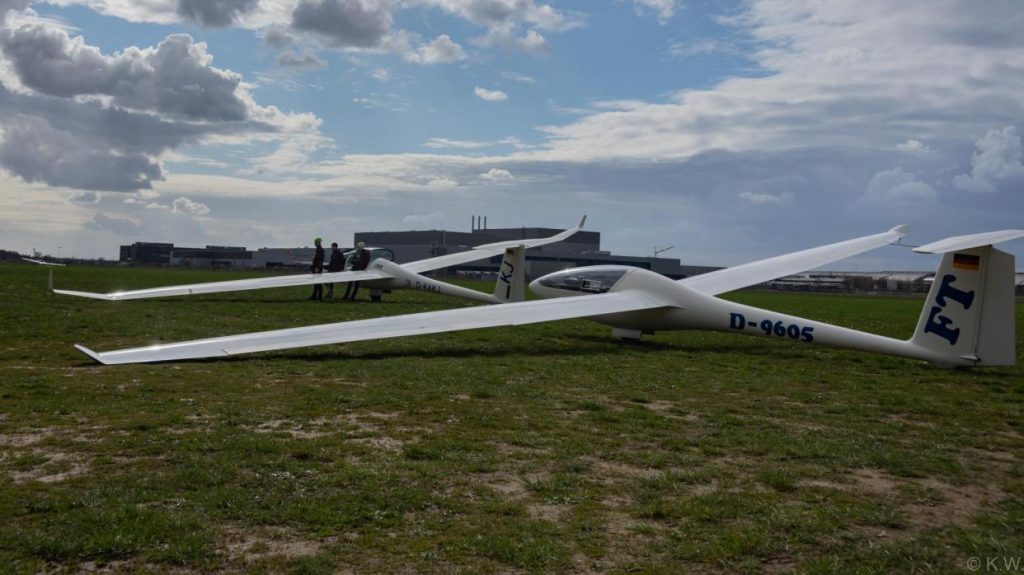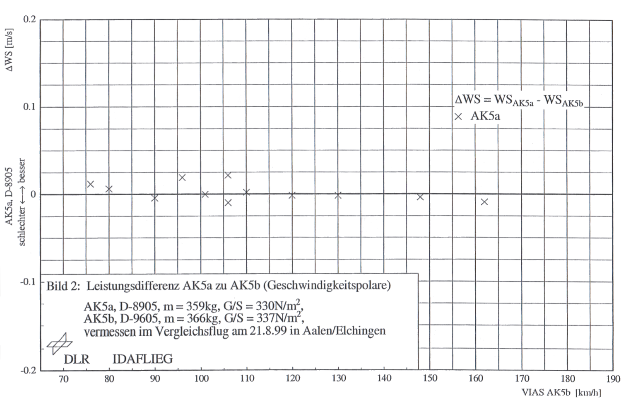AK-5b
The AK-5b is a further development of our proven AK-5.
Development: 1990 -1996
Start of Construction: Spring 1985
Maiden Flight: 26.05.1996


The AK-5b was conceived as a direct successor project to the AK-5. The initial aim was to pass on the knowledge gained from the design and construction of the AK-5 to the next generation of Akaflieg pilots. In addition, the fuselage was to be built using CFRP in order to gain experience with this material. The AK-5b was also to undergo some detail improvements compared to the AK-5. As the elevator control of the AK-5 in particular had attracted attention as being rather negative due to its short travel, the control system was extensively revised. Care was taken to ensure that the stick deflection of the elevator was significantly greater than in the AK-5. The cockpit was fitted with a modified instrument panel that reduces visibility. In addition, the cockpit structure has been revised to meet current safety standards in the event of a crash. For this reason, the canopy emergency release concept has also been revised so that only one lever is required for the emergency release. As a further detail improvement, the edge arches of the wing were made of carbon fiber and designed as 45° winglets.
As the hull was given a completely new configuration, a load test was required. The load-bearing fuselage was built first. After the required load cases were confirmed by the Federal Aviation Office, the load test was finally successfully carried out in 1994, so that nothing stood in the way of the construction of the flying fuselage.
Since the AK-5b also had new control surfaces and the control system had been revised compared to the AK-5, a static oscillation test also had to be carried out on it. This was carried out in September 1996, after the AK-5b had been completed just in time thanks to a great deal of hard work.


After the AK-5b was presented to the public at the ILA in Berlin, it was possible to pick up the necessary “provisional traffic license” in Braunschweig on the way back. The first flight took place on May 26, 1996 and flight testing began immediately afterwards. This initially included general flight behavior, slow flight and stall behavior as well as airspeed indicator calibration. Furthermore, the static longitudinal stability was examined and the neutral point determined. A flight performance measurement was also carried out at the summer meeting. In addition, the correct position of the serrated tape was to be determined by means of paintwork images.
After spin, flutter and aerobatic tests had been carried out, the flight tests were completed in 1997 and the AK-5b was handed over for wide-body testing. In the fall, the first student pilots were also allowed to fly it.
As part of the 70th anniversary celebrations of the Akaflieg Karlsruhe in 1998, the AK-5b was christened “Otto K. K.”. Honorary member Prof. Dr.-Ing. Otto Schiele had chosen this name in reference to Otto Klein-Küppert, who had bequeathed his fortune to the KSB Foundation, which regularly supports the Akaflieg in its project work by providing financial assistance.
As the Akaflieg Karlsruhe now had two very similar airplanes, they could be compared very well with each other. At the 1999 summer meeting, a flight performance measurement was therefore carried out between the AK-5 and AK-5b in order to determine a direct comparison of the sister aircraft. No relevant differences in performance were found.

After more than 20 years in operation, the objectives of the project can now be considered to have been achieved. The AK-5b is characterized by good-natured, balanced flight characteristics and relatively high flight performance. In the meantime, flight testing has been fully completed by the Federal Aviation Office and the final certificates have been submitted, which is why the single unit certification is now expected. The AK-5b will be used at the Akaflieg Karlsruhe as the first training single-seater and will give flight students the opportunity to gain experience with prototypes at the beginning of their flying career.